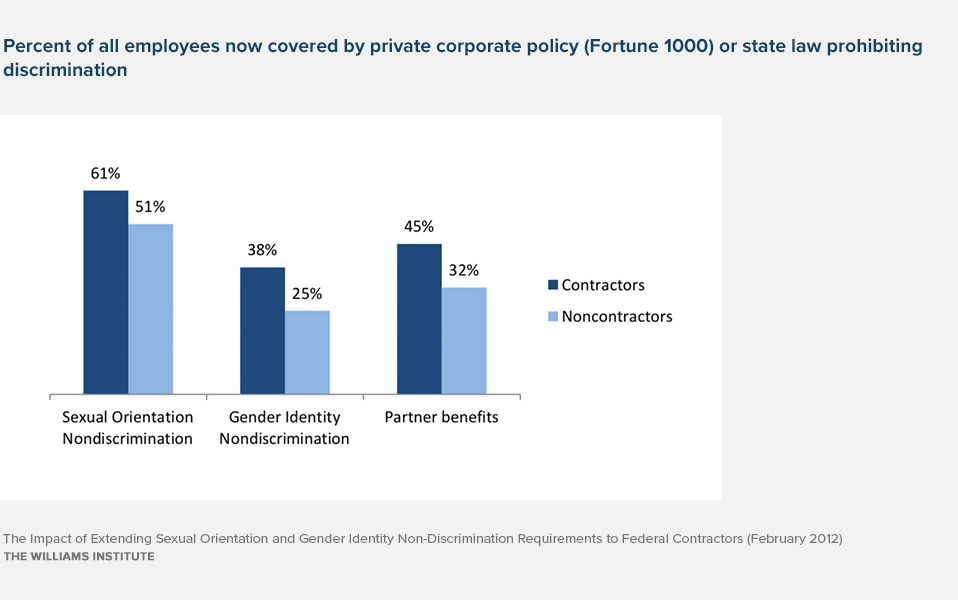Executive Summary
This study estimates how many U.S. workers currently have protection against workplace discrimination based on sexual orientation and gender identity among private-sector employers. We use these estimates to answer several questions about two sets of private-sector employers: those that are federal contractors and those that are not federal contractors. In particular, we explore the potential impact of a public policy requiring federal contractors to have nondiscrimination policies that include sexual orientation and gender identity.
- What percentage of employees are currently covered by laws or company policies against discrimination based on sexual orientation? Among federal contractors, 61% of employees are already covered; 51% of noncontractor employees are covered.
- What percentage of employees are currently covered by laws or private policies against discrimination based on gender identity? Among federal contractors, 41% of employees are already covered; 28% of noncontractor employees are covered.
- What percentage of employees currently have access to health care coverage for a same-sex partner? Among federal contractors, 45% of employees are already covered; 32% of noncontractor employees are covered.
- If federal contractors were required to have policies against sexual orientation and gender identity discrimination, how many more employees would be covered? For sexual orientation, 11 million more would be covered; for gender identity, up to 16.5 million more would be covered.
- If federal contractors were required to provide health care benefits to same-sex domestic partners of employees, how many more employees would have such access? An additional 14.3-15.3 million more employees would have access to coverage for a same-sex partner. However, only 40,000 to 136,000 of these employees would sign up a same-sex partner for coverage, and they would be spread out across tens of thousands of federal contractors.
- Are large defense contractors very likely to have these policies? Among the largest private defense contractors, 95% of employees are covered by a sexual orientation policy or state law, 69% are covered by a gender identity policy or state law, and 81% have access to benefits for a same-sex partner by state law or a private policy.
- Would a federal contractor requirement have a bigger effect on small businesses? Employees are equally likely to be covered already in small, medium, or large federal contractors, with the exception of higher rates of coverage for Fortune 1000 employees.
